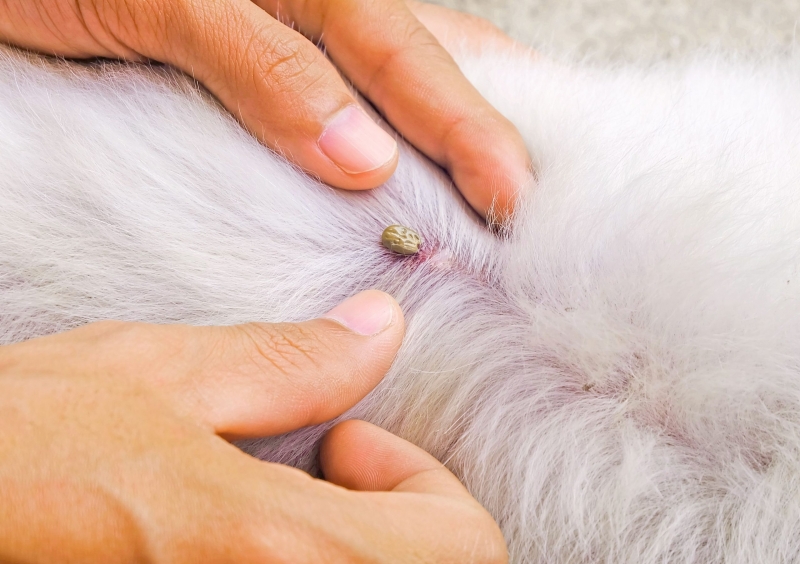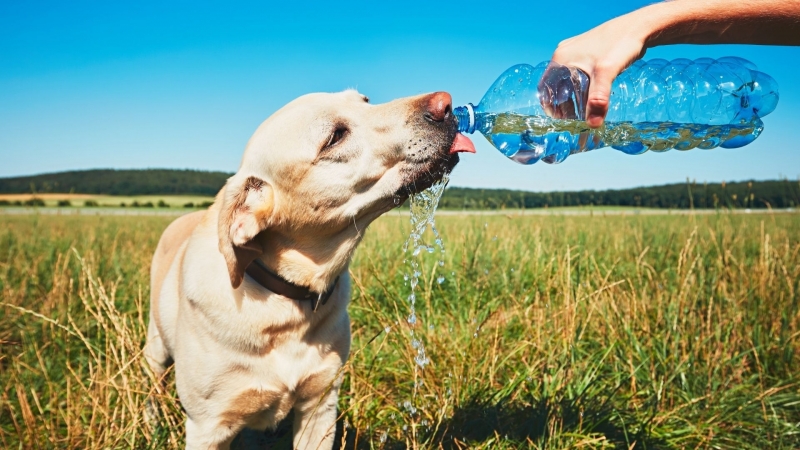To ensure your pets thrive during the summer months, it’s essential for pet owners to be aware of common issues dogs face in the heat. Each season brings its own set of factors that can impact their health. Below, we’ll delve into some insights to help you better understand the typical challenges dogs encounter during the summer season.
Firstly, it’s crucial to recognize that dogs are susceptible to heatstroke, particularly in hot climates or during prolonged exposure to high temperatures. Unlike humans, dogs can’t efficiently regulate their body temperature through sweating, making them more prone to overheating. Signs of heatstroke in dogs include excessive panting, drooling, lethargy, and in severe cases, collapse. To prevent heat-related illnesses, ensure your dog has access to shade, plenty of water, and never leave them in a parked car, where temperatures can skyrocket rapidly, even with the windows cracked open.
Moreover, summer brings about an increase in parasites such as fleas, ticks, and mosquitoes, which can pose various health risks to dogs. Fleas not only cause discomfort and itching but can also transmit diseases such as tapeworms and Bartonella. Ticks carry diseases like Lyme disease and Rocky Mountain spotted fever, while mosquitoes can transmit heartworms, a potentially fatal condition if left untreated. To protect your furry companion, use vet-approved flea and tick preventatives and consider mosquito repellents recommended for dogs.
Additionally, paw care is essential during the summer months, as hot pavement and sand can cause burns and discomfort for dogs. To prevent paw injuries, avoid walking your dog during the hottest parts of the day and opt for shaded or grassy areas instead of hot pavement. You can also consider using paw wax or booties to provide an extra layer of protection.
Another common issue during summer is dehydration, as dogs can quickly lose fluids through panting and sweating. Ensure your dog has access to fresh, clean water at all times, especially during outdoor activities or walks. Signs of dehydration include dry gums, excessive panting, lethargy, and sunken eyes. If you suspect your dog is dehydrated, offer them water immediately and seek veterinary attention if symptoms persist.
In conclusion, understanding and addressing the challenges that dogs face during the summer months are vital for ensuring their health and well-being. By taking proactive measures such as providing shade, preventing parasites, caring for their paws, and monitoring hydration levels, you can help your furry friend enjoy a safe and enjoyable summer season. Remember, your pet relies on you to keep them happy and healthy, so stay informed and proactive in caring for their needs all year round.
1. Ticks and fleas in dogs
Ticks and fleas are common issues for pets throughout the year, but their prevalence tends to increase during the summer months. The likelihood of dogs getting infected rises notably during this time compared to other seasons. These parasites can lead to serious health issues for our beloved canine companions. In addition to causing blood loss and anemia, ticks can transmit Lyme disease and other severe bacterial infections.
Whenever you return home after a summer outing, it’s essential to remember to thoroughly check your dog’s body, paying close attention to areas around the mouth, inside the ears, the neck, and other warm, moist areas where ticks and fleas tend to hide. These parasites can quickly latch onto your dog during outdoor activities, and timely detection is crucial for preventing potential health complications.
Fleas, in particular, are notorious for their rapid reproduction and ability to infest not only your pet but also your home. A single female flea can lay dozens of eggs per day, leading to a full-blown infestation if left unchecked. Apart from causing discomfort and irritation, flea infestations can result in allergic reactions and skin infections in dogs. Therefore, prompt action is necessary to address any signs of flea activity.
To effectively protect your furry friend from ticks and fleas during the summer, consider using veterinarian-recommended preventive treatments such as topical solutions, collars, or oral medications. These products can help repel parasites and kill them before they have a chance to harm your pet. Additionally, regularly grooming your dog and maintaining a clean living environment can significantly reduce the risk of infestation.
In conclusion, while ticks and fleas pose year-round threats to pets, their prevalence escalates during the summer months. By staying vigilant and implementing preventive measures such as thorough inspections, appropriate treatments, and good hygiene practices, you can safeguard your dog’s health and ensure they enjoy a pest-free summer season. Remember, proactive care is key to keeping your furry companion happy and healthy all year long.

- Dog bitten by insect
When humans get stung by insects, especially bees, they experience not only swelling and pain but also defensive reactions. Similarly, dogs exhibit similar responses when they encounter such situations. Recognizable signs include sudden vocalizations, licking, or attempting to rub the affected area. Some dogs may also show other allergic reactions such as facial swelling and hives.
More severely, dogs may display symptoms like vomiting, diarrhea, pale gums, difficulty breathing, unsteady gait, ultimately leading to physical weakness. Besides bees, mosquitoes are also creatures to watch out for during the summer. Within mosquitoes, there are numerous parasites that cause heartworm disease – Dirofilaria immitis. If bitten by a mosquito, dogs can contract this dangerous illness.
It’s crucial to remain vigilant and proactive in protecting your furry companions from these potential hazards. If you notice any unusual symptoms or behaviors in your dog after outdoor activities, promptly seek veterinary attention to address any potential health concerns. Additionally, consider preventive measures such as using insect repellents, keeping your yard free of standing water where mosquitoes breed, and regularly administering heartworm preventatives as recommended by your veterinarian.
By staying informed and taking proactive steps to mitigate risks, you can help ensure that your canine friends stay safe and healthy during the summer months and beyond. Remember, your vigilance and care are essential in keeping your pets happy and thriving all year round.

3. Dogs get sunburn
Breeds of dogs with short and light-colored fur on their face often face a higher risk of sunburn. To prevent sunburn, pet owners should lead their furry companions to shaded and cool areas when outdoors. It’s important to remember that just like humans, dogs can suffer from sunburn, especially on areas with less hair and pigmentation.
Excessive sun exposure can lead to painful burns, redness, and even skin damage in dogs. Additionally, prolonged exposure to the sun increases the risk of skin cancer in dogs. Therefore, providing shade and limiting outdoor activities during peak sun hours can help protect your pet from harmful UV rays. Consider using pet-safe sunscreen on vulnerable areas such as the nose, ears, and belly if your dog will be spending extended periods in the sun. Taking these precautions can ensure that your furry friend stays comfortable and safe while enjoying outdoor adventures.
4. Dogs get heat stroke
Older dogs and those carrying excess weight are often at a higher risk of heat exhaustion during the summer months. Similar to issues of dehydration and sunburn, pet owners need to ensure an adequate supply of cool water and schedule outdoor activities during cooler parts of the day for their furry companions. Furthermore, it’s important to note that a dog’s tongue and paw pads play crucial roles in regulating body temperature. Therefore, during walks, owners should occasionally pause to allow their dogs to drink water and wet their paw pads.
As dogs age, their ability to regulate body temperature may decrease, making them more susceptible to heat-related illnesses. Additionally, overweight dogs tend to retain more heat due to their insulating layer of fat, further increasing their risk. To help prevent heat exhaustion in these vulnerable pets, it’s essential to be proactive in providing them with a cool and comfortable environment.
In addition to ensuring access to water and scheduling outdoor activities wisely, pet owners can also take other measures to keep their furry friends safe during the summer. This includes providing shaded areas for relaxation, avoiding strenuous exercise during the hottest parts of the day, and never leaving pets unattended in vehicles, where temperatures can quickly become dangerously high.
https://fusiongroup.vn/upload/file/thumb_800x0/cho-bi-chay-nang-1653364991.jpg
By being mindful of the specific needs of older or overweight dogs during the summer months, pet owners can help minimize the risk of heat-related illnesses and ensure their beloved companions enjoy a safe and enjoyable season. Remember, your furry friend’s well-being depends on your proactive care and attention, so always prioritize their comfort and safety, especially when temperatures rise.
- Dogs are dehydrated
Dehydration is a common issue for dogs during the summer months. Dogs can become dehydrated due to insufficient water intake, leading to symptoms such as lethargy, weakness, difficulty breathing, dry skin, and sticky gums. When you notice signs of dehydration in your dog, it’s crucial to offer them cool water frequently to replenish their fluids. Additionally, it’s advisable to take your dog for walks during the early morning or evening hours to avoid the peak heat of the day.
Preventing dehydration in dogs requires proactive measures to ensure they have access to an adequate water supply at all times. This is especially important during hot weather when dogs lose fluids more rapidly through panting and sweating. Always provide fresh, clean water in a shaded area where your dog can easily reach it, and consider adding ice cubes to keep the water cool and refreshing.

In addition to maintaining proper hydration, monitoring your dog’s behavior and well-being is essential. If you notice any signs of dehydration or heat exhaustion, such as excessive panting, drooling, or weakness, it’s crucial to take immediate action to prevent further complications. Offer your dog water and move them to a cooler environment to help lower their body temperature.
By staying vigilant and proactive in addressing dehydration risks, you can help ensure that your dog stays healthy and hydrated throughout the summer season. Remember, proper hydration is key to your dog’s well-being, so make it a priority to provide them with plenty of water and take precautions to prevent dehydration-related issues.